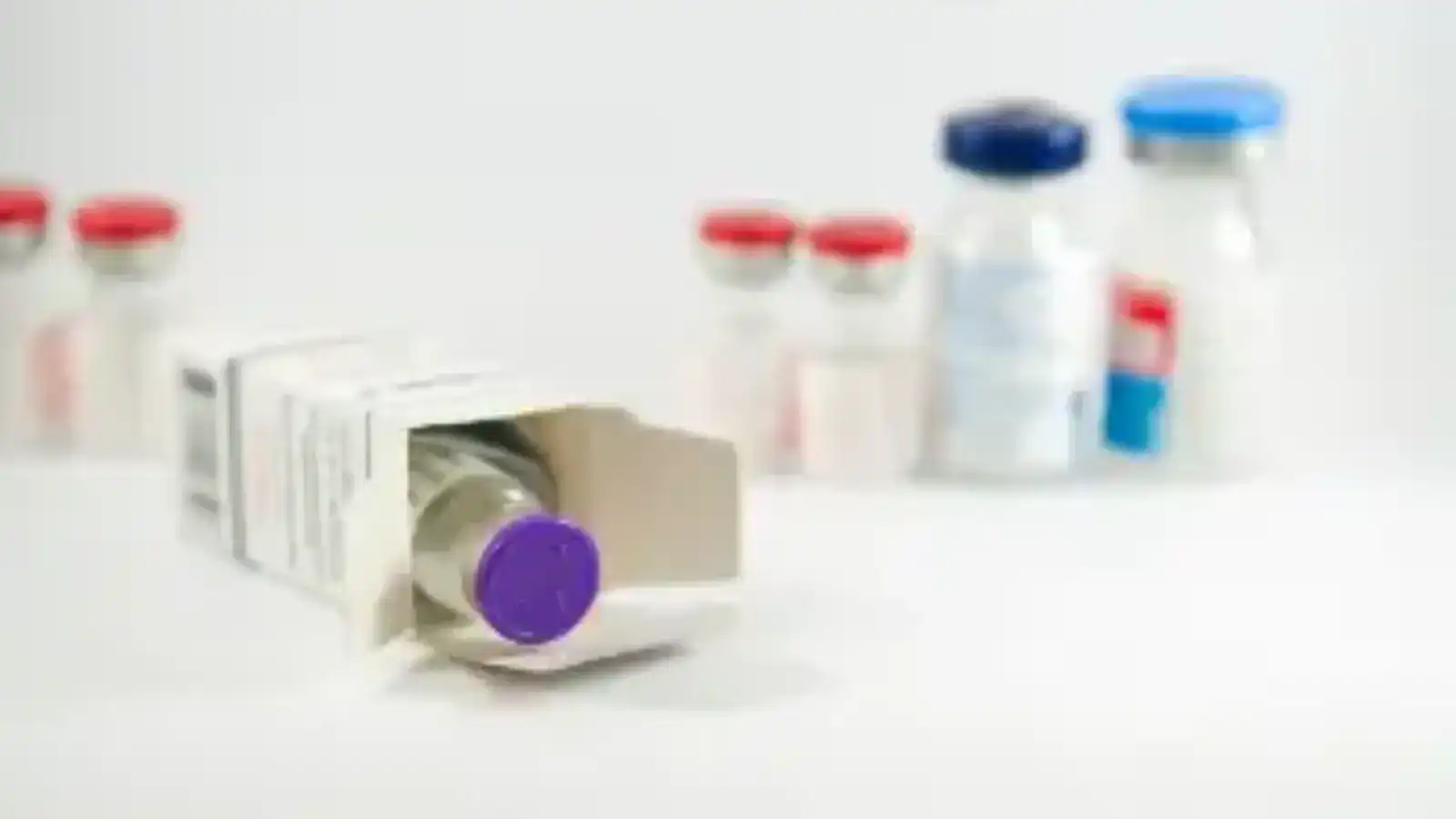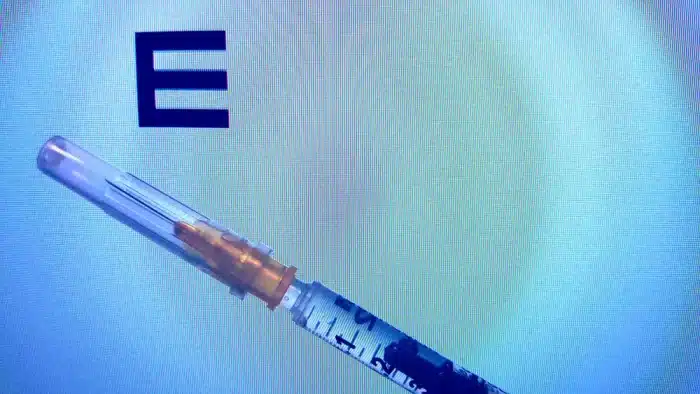Business Hours: Monday - Friday: 9 AM - 6 PM EST

Eylea Injection vs Avastin – Comparing Two Anti-VEGF Treatments
David Fuller
Last Updated On: February 12, 2025
Anti-vascular endothelial growth factor (VEGF) treatments have transformed the management of retinal diseases, offering improved outcomes for millions of patients. Research shows that 90% of individuals receiving anti-VEGF therapy experience vision stabilization, with about one-third seeing measurable improvement. These treatments play a crucial role in slowing disease progression and preserving sight.
Two of the most commonly used anti-VEGF injections are Eylea and Avastin. While both effectively target VEGF to manage conditions like age-related macular degeneration (AMD) and diabetic macular edema (DME), they differ in formulation, cost, and regulatory approval. Understanding these differences can help patients and physicians choose the most suitable treatment.
In this article, we will compare Eylea injection vs Avastin, examining their mechanisms of action, clinical efficacy, safety profiles, and key considerations for retinal disease treatment.
Key Takeaways
- Both treatments have similar safety profiles and mild side effects, such as eye irritation and blurred vision; however, Avastin carries a slightly higher risk of inflammation due to compounding.
- Serious risks, such as intraocular inflammation and infection, require monitoring.
- Eylea may offer enhanced long-term benefits and require fewer injections, whereas Avastin is a more affordable option but demands more frequent dosing and carries compounding risks.
- Patients should rely on the expertise of their ophthalmologist to guide them in choosing the most appropriate treatment based on cost and disease severity.
About: Med Supply Solutions has been operating since 2016 and is known as one of the industry’s top and trusted suppliers of cosmetic and viscosupplementation products. Contact our sales department for more information about buying Eylea online.

Eylea vs Avastin: Indications and Approvals

Eylea and Avastin are used to treat retinal diseases but differ in FDA approvals, intended uses, and formulation.
On Eylea (Aflibercept)
- FDA-approved for retinal conditions, including wet AMD, diabetic macular edema (DME), retinal vein occlusion (RVO), and myopic choroidal neovascularization.
- Specifically developed as an ophthalmic injection for eye diseases.
- Offers longer-lasting effects, reducing the need for frequent injections.
On Avastin (Bevacizumab)
- Originally FDA-approved for cancer treatment, including colorectal and lung cancer.
- Used off-label for retinal diseases like wet AMD and DME.
- A cost-effective alternative to Eylea but requires compounding into smaller doses for eye injections.
While both treatments effectively target VEGF to manage retinal diseases, Eylea is FDA-approved for ophthalmic use, whereas Avastin is a repurposed oncology drug used off-label in eye care.
Mechanism of Action and Efficacy
Eylea and Avastin both work by blocking VEGF, but their mechanisms and effects differ. Eylea’s mechanism of action involves binding to VEGF-A and placental growth factor (PIGF), preventing abnormal blood vessel growth and leakage. Acting as a soluble decoy receptor, it offers broader VEGF inhibition, leading to longer-lasting effects and reducing the frequency of injections.
Initially developed for cancer treatment, Avastin primarily inhibits VEGF-A to limit blood vessel growth and leakage. However, since it does not block PIGF, it may require more frequent injections to achieve similar outcomes as Eylea in retinal disease treatment.
Efficacy Comparison
- Eylea provides longer-lasting effects per dose and requires fewer injections (every 8 weeks after the initial loading phase).
- Avastin is effective but often requires more frequent injections (every 4 weeks) to maintain results.
- Clinical studies suggest Eylea may provide slightly better vision improvement over time, particularly for wet AMD and DME patients.
While both treatments reduce vision loss, Eylea’s dual inhibition of VEGF and PIGF may offer advantages in long-term disease control.
Safety and Side Effects

Both Eylea and Avastin have strong safety profiles, with minimal risks when administered correctly. While some differences exist in monitoring requirements and potential complications, both treatments are generally well-tolerated by patients.
Common Side Effects
- Eylea: Mild eye irritation, temporary blurred vision, and mild redness.
- Avastin: Similar side effects, though there may be a slightly higher risk of inflammation due to repackaging from larger doses.
Serious Risks (Rare but Possible)
- Intraocular inflammation: More frequently reported with Avastin, likely due to compounding variability.
- Infection (Endophthalmitis): Both treatments carry a small risk, but proper injection techniques significantly minimize this.
- Increased intraocular pressure: Eye pressure may temporarily rise after injections.
Patients receiving either Eylea or Avastin should undergo regular eye exams to monitor for potential complications. Routine follow-ups ensure continued treatment effectiveness and allow for early detection of any adverse effects.
Conclusion
Eylea and Avastin are both effective treatments for wet AMD, DME, and RVO, but they differ in approval status, mechanism of action, and treatment approach. Eylea is FDA-approved for retinal diseases, blocking both VEGF and PIGF for longer-lasting effects and reducing the need for frequent injections. Although widely used off-label for eye conditions, Avastin was originally developed for cancer treatment and requires compounding, which may introduce variability and contamination risks.
While both options improve vision, Eylea’s extended dosing intervals and dual inhibition may offer greater long-term benefits. The choice between Eylea and Avastin depends on factors such as cost, treatment frequency, and disease severity. Consulting an ophthalmologist is essential to determine the most suitable option for each patient’s needs.
FAQs
1. Which is better for wet AMD, Eylea or Avastin?
Both are effective, but Eylea may offer longer-lasting benefits with fewer injections. Avastin is often used as a more affordable alternative but may require more frequent dosing.
2. Is Avastin safe for eye injections?
Yes, Avastin is commonly used off-label for retinal diseases. Although it requires compounding from larger doses, which introduces some variability and a slightly higher risk of contamination, it remains a widely accepted and safe option when proper protocols are followed.
3. Does insurance cover Eylea and Avastin?
Coverage can vary by provider and plan. Eylea is FDA-approved for ophthalmic use, making it more likely to be covered for retinal diseases. Avastin, although off-label, is often covered due to its lower cost and widespread use in treating retinal conditions.
References
CDC. VEHSS Modeled Estimates for Age-Related Macular Degeneration (AMD). Vision and Eye Health Surveillance System. Published November 26, 2024. https://www.cdc.gov/vision-health-data/prevalence-estimates/amd-prevalence.html
Wykoff CC, Clark WL, Nielsen JS, Brill JV, Greene LS, Heggen CL. Optimizing Anti-VEGF Treatment Outcomes for Patients with Neovascular Age-Related Macular Degeneration. Journal of Managed Care & Specialty Pharmacy. 2018;24(2-a Suppl):S3-S15. doi:10.18553/jmcp.2018.24.2-a.s3
Kiss S, Malangone-Monaco E, Wilson K, et al. Real-World injection frequency and cost of Ranibizumab and Aflibercept for the treatment of neovascular Age-Related macular degeneration and diabetic macular edema. Journal of Managed Care & Specialty Pharmacy. 2020;26(3):253-266. doi:10.18553/jmcp.2020.19245
Products
Cart
Log In
Newsletter
Subscribe for exclusive offers and updates on new arrivals
Share feedback at:
Working Hours
Monday to Friday: 9 AM to 6 PM EST
The Most Popular Brands
Med Supply Solutions
Support
Copyright 2025. Med Supply Solutions